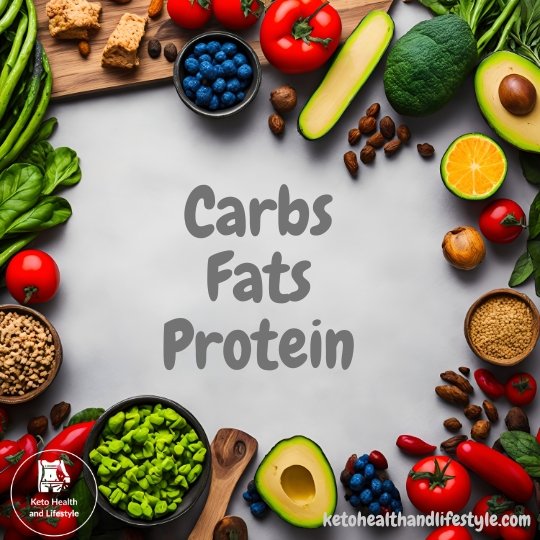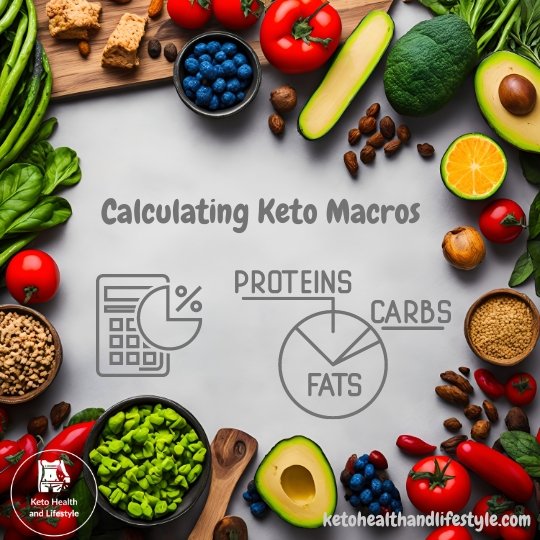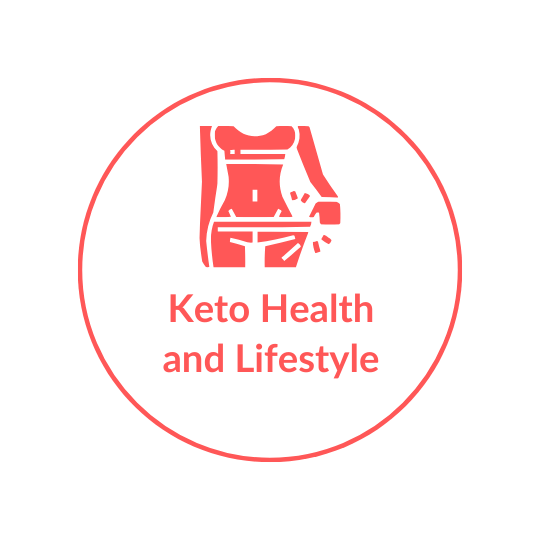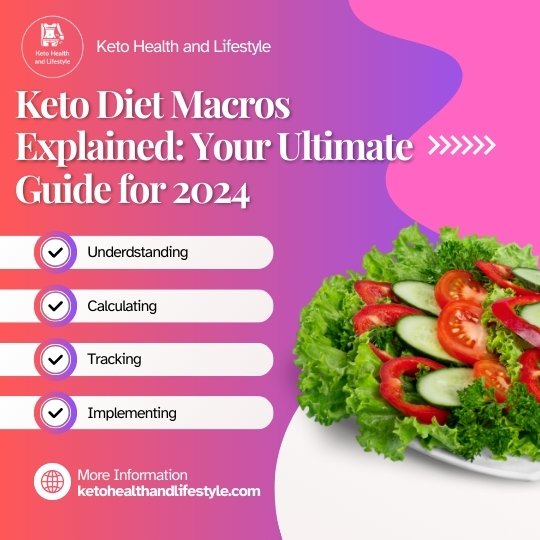This post may contain affiliate links which means I may receive a commission for purchases made through links. Learn more about policies on my about page.
Table of Contents
Understanding the concept of keto diet macros is crucial for achieving success in your ketogenic journey.
Your macronutrient intake, comprising carbohydrates, fats, and proteins, plays a pivotal role in maintaining ketosis – the state where your body burns fat for energy. The distribution of these macros is essential to reap the benefits of the keto diet effectively.
Typically, a standard keto diet involves consuming very low carbohydrates, moderate protein, and high fat. The general ratio for keto diet macros is around 5-10% carbohydrates, 55-60% fats, and 30-35% protein. These ratios are pivotal in regulating your body’s metabolism and energy levels while on a keto diet.
Calculating and monitoring your macros accurately can be the key to attaining your health and weight loss goals with the keto diet. By customizing your macronutrient intake according to your needs, you can optimally fuel your body and enhance the benefits of ketosis.
Understanding Keto Diet Macros
The ketogenic diet, commonly known as the keto diet, is a low-carb, high-fat diet that offers many health benefits. To effectively follow and benefit from the keto diet, it is essential to understand the concept of macronutrients, often referred to as macros. These macronutrients play a crucial role in the success of a ketogenic lifestyle.
What are Macronutrients?
Macronutrients are the essential nutrients that our bodies require in large quantities to function optimally. There are three primary macronutrients: fats, proteins, and carbohydrates. Each macronutrient serves a specific purpose in providing energy and supporting various bodily functions.
- Carbohydrates: Carbs are the body’s primary source of energy. In a standard diet, carbs are consumed in higher quantities. However, in the keto diet, carbohydrate intake is significantly reduced to induce a metabolic state known as ketosis.
- Proteins: Proteins are vital for tissue repair, muscle growth, and overall body maintenance. On a ketogenic diet, moderate protein intake is recommended to prevent the body from breaking down protein for energy, which can hinder ketosis.
- Fats: Healthy fats are the cornerstone of the ketogenic diet. They provide a sustainable energy source and help the body reach and maintain ketosis. Embracing good fats is key to reaping the benefits of the keto lifestyle.
The Role of Macronutrients in Keto Diet
In the context of the keto diet, carefully balancing the intake of macros is essential for achieving and sustaining ketosis. The typical macro breakdown for a standard ketogenic diet consists of approximately 70-75% of calories from fats, 20-25% from proteins, and 5-10% from carbohydrates.
Maintaining this optimal macronutrient balance allows the body to switch its primary fuel source from glucose to ketones, which are produced from fats in the liver. This metabolic state leads to increased fat burning and weight loss, improved energy levels, mental clarity, and various other health benefits associated with the keto diet.
Understanding how macronutrients function within the keto diet empowers individuals to make informed choices about their food intake, ensuring they stay on track towards their health and wellness goals. By prioritising the right macros in the right proportions, one can leverage the power of ketosis to enhance overall well-being and vitality.

Ideal Keto Diet Macros
When following a ketogenic diet, it is essential to understand the ideal macronutrient breakdown to achieve optimal results. The three key macro categories to focus on are carbohydrates, fats, and proteins.
Carbohydrates
In a ketogenic diet, carbohydrates are significantly restricted to encourage the body to enter a state of ketosis, where it burns fat for fuel instead of carbohydrates. Typically, keto diets recommend keeping carbohydrate intake between 5% to 10% of total daily calories. This low carb intake helps maintain ketosis and supports fat burning for energy.
For more information on different variations of keto macros, you can refer to Health – Keto Macros: 4 Variations.
Fats
Fats play a predominant role in a ketogenic diet, with most of your daily calories coming from healthy fats. The typical range for fat intake on a keto diet is around 55% to 70% of total daily calories. Incorporating sources of healthy fats such as avocados, nuts, seeds, and olive oil is crucial for meeting your fat macro goals.
Explore further insights on finding the right keto macro ratios with the help of the Keto Calculator by Omni Calculator.
Proteins
While protein intake is moderate compared to fats, it is still an essential component of a well-rounded keto diet. On average, protein intake should range from 20% to 30% of total daily calories. Choosing lean sources of protein like poultry, fish, tofu, and legumes can help you meet your protein requirements while supporting muscle health and satiety.
Learn how to accurately calculate your macros for a keto diet using the Keto Macro Calculator for personalised recommendations.
For most people, achieving the right balance of macros involves understanding and adjusting carbohydrate, fat, and protein intake to suit individual needs and health goals. Understanding these ideal keto diet macro proportions is key to following a successful ketogenic eating plan.
Calculating Personal Keto Macros
Determining your personal keto macros is crucial for effectively following a ketogenic diet. By tailoring your macronutrient intake to your specific needs, you can optimise your results and ensure you stay on track with your health goals.
Using Keto Macro Calculators
One of the most convenient ways to calculate your personal keto macros is by using online keto macro calculators. These tools take into account factors such as your weight, height, activity level, and goals to provide you with precise macronutrient recommendations for a ketogenic diet.
These calculators typically require you to input basic information about yourself, including your age, gender, weight, and activity level. Some advanced calculators may also consider additional details like body fat percentage for more accurate results. The output usually includes recommended daily intake of fat, protein, and carbohydrates in grams or percentages.
Adjusting Macros for Weight Loss or Maintenance
When calculating your keto macros, it’s essential to adjust them based on whether your goal is weight loss or maintenance. For weight loss, you would typically aim for a calorie deficit by reducing your overall energy intake while maintaining a sufficient protein intake to preserve muscle mass.
To adjust your macros for weight loss, you may need to increase your protein intake slightly, moderate your fat intake, and limit your carbohydrate consumption to achieve ketosis and promote fat burning. On the other hand, if your goal is weight maintenance, you would adjust your macros to sustain your current weight by balancing your energy input and output.
By fine-tuning your keto macros according to your specific objectives, you can customise your diet plan for better adherence and successful outcomes. Utilising macro calculators and understanding how to adapt your macros for different purposes are key elements in navigating the complexities of a ketogenic diet.

Tracking and Adjusting Macros on Keto
When following a ketogenic diet, tracking and adjusting your macros play a crucial role in achieving your desired health and fitness goals. Understanding the importance of tracking macros and being aware of common challenges and how to overcome them can significantly impact your success on the keto diet.
Importance of Tracking Macros
Tracking your macronutrients – fats, proteins, and carbohydrates – is essential for maintaining ketosis and ensuring you’re adhering to a high fat, moderate protein, very low carb eating plan. By monitoring your macros, you can optimise your nutrient intake, control portion sizes, and stay on track with your goals.
One common challenge many individuals face when tracking macros on the keto diet is the initial adjustment period. As your body adapts to using fat for fuel instead of carbohydrates, you may experience fluctuations in energy levels and appetite. However, by staying consistent with your macro tracking and making gradual adjustments, you can navigate through this transition phase successfully.
Common Challenges and How to Overcome Them
- Difficulty in Calculating Macros: Use reliable resources like macro calculators or apps specifically designed for the keto diet to simplify the process. These tools can help you determine the ideal macro ratios based on your individual needs and goals.
- Lack of Variety in Meals: Experiment with different keto-friendly recipes and ingredients to diversify your meals while staying within your macro targets. Incorporating a mix of healthy fats, lean proteins, and low-carb vegetables can make your diet more enjoyable and sustainable.
- Plateauing Progress: If you find yourself plateauing in your keto journey, consider reassessing your macro goals and making adjustments. Tweak your fat, protein, and carb intake to kickstart your progress and continue towards your desired outcomes.
- Social Pressure and Temptations: Communicate your dietary preferences and goals with friends and family to garner support. Opt for keto-friendly options when dining out or attending social gatherings to stay on track while still enjoying social interactions.
Remember, tracking and adjusting your macros on the keto diet is a dynamic process that requires patience and consistency. By staying mindful of your nutrient intake, overcoming challenges, and making necessary tweaks, you can optimise your keto experience and maximise your results.
Implementing Keto Diet Macros Wisely
Successfully implementing keto diet macros requires strategic meal planning and preparing recipes that align with your macro goals.
Meal Planning to Meet Macro Goals
Meal planning plays a vital role in ensuring you meet your keto diet macro goals. Start by calculating your required macronutrient intake based on your daily calorie needs. Typically, a standard keto macro distribution includes approximately 70% fats, 5% carbohydrates, and 25% protein. Use a reliable keto macro calculator to determine your personalised macro targets.
When planning your meals, focus on incorporating healthy fats like avocados, olive oil, and nuts, along with high-quality proteins such as chicken, fish, and tofu. Opt for low-carb vegetables to keep your total carb intake within the keto range. Consider prepping your meals in advance to stay on track with your macro goals throughout the week. Structuring your meals around your macro targets can help you achieve and maintain ketosis effectively.
Recipes to Support Keto Macros
Finding recipes that align with your keto macro ratios is essential for a successful ketogenic diet. Look for recipes that are high in healthy fats, moderate in protein, and low in carbohydrates. Incorporate dishes like avocado and egg breakfast bowls, salmon with cauliflower rice, or chicken stir-fry with vegetables.
Experimenting with keto-friendly desserts like chia seed pudding, coconut flour pancakes, or fat bombs can help satisfy your sweet cravings while staying within your macro limits. Websites offering keto meal plans and recipes tailored to the ketogenic diet can provide inspiration and guidance in creating delicious meals that support your macro goals.
By carefully planning your meals and exploring diverse keto recipes, you can effectively implement keto diet macros to enhance your health and achieve your desired outcomes.
For further information on keto diet types and meal planning, you can refer to reputable sources such as Health – Keto Macros: 4 Variations and Healthline – A Keto Diet Meal Plan and Menu for a Lower Carb Lifestyle.
Consulting a Professional for Macro Guidance
Before embarking on your keto diet journey, consulting a professional for macro guidance can be immensely beneficial. Nutritionists or dietitians play a crucial role in helping you understand the intricacies of macronutrients and tailor a keto plan that suits your lifestyle and health goals.
The Role of Nutritionists or Dietitians
Nutritionists and dietitians are qualified experts who can provide personalised advice on structuring your keto diet macros. They assess your nutritional needs, taking into account factors such as age, weight, activity levels, and any underlying health conditions. By collaborating with these professionals, you can create a sustainable and efficient macro plan that aligns with your specific requirements.
Nutritionists and dietitians not only design your macro ratios but also educate you on the importance of each macronutrient – fats, proteins, and carbohydrates – in achieving ketosis. They guide you on making informed food choices, monitoring your progress, and making adjustments as needed. Additionally, they can help you navigate any challenges or plateaus you may face during your keto journey. Their expertise ensures that you stay on track towards your health and wellness objectives.
By seeking guidance from these professionals, you gain access to tailored support and evidence-based recommendations that can maximise the effectiveness of your keto diet. Their expertise empowers you to make informed decisions, optimise your nutrient intake, and achieve sustainable results in a safe and healthy manner.
Remember, consulting a professional for macro guidance is a proactive step towards enhancing the success and longevity of your keto diet journey. With their expertise and support, you can navigate the complexities of macro management with confidence and clarity, paving the way for a successful and sustainable lifestyle transformation.
Conclusion
The journey through understanding keto diet macros has been enlightening and empowering. By grasping the significance of balancing fats, proteins, and carbohydrates in your diet, you unlock the potential for sustained energy, enhanced metabolic function, and effective weight management.
Reflecting on Your Macros
As you delve deeper into the realm of keto diet macros, it becomes clear that personalised nutrition plays a pivotal role in achieving your health and wellness goals. Utilising tools like keto macro calculators can provide invaluable insights into the ideal composition of your daily meals to support your unique needs.
Embracing Macro Tracking
Tracking your macros on the keto diet empowers you to make informed choices about the foods you consume. By maintaining a conscious awareness of your fat, protein, and carbohydrate intake, you take control of your nutrition, paving the way for success in your dietary endeavours.
Sustaining Your Keto Lifestyle
As you navigate the intricacies of keto macros, remember that sustainable progress stems from consistency and mindfulness. Embrace the journey towards optimal health with a balanced approach to your macronutrient intake, fostering a harmonious relationship with food that nurtures both body and mind.
Continual Growth in Keto Knowledge
The world of keto macros is dynamic and ever-evolving, offering endless opportunities for learning and growth. Stay curious, experiment with different macro ratios, and discover what works best for your body. Remember, knowledge is power, and your commitment to understanding keto diet macros sets the foundation for a vibrant, healthy lifestyle.
Also look at What is strict, clean, dirty lazy keto? to discover which element of the keto diet can work best for you.
References:

